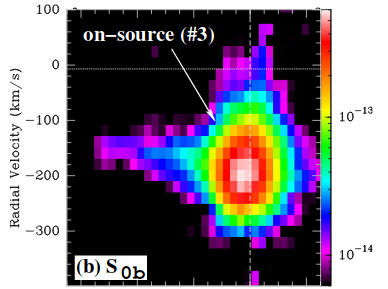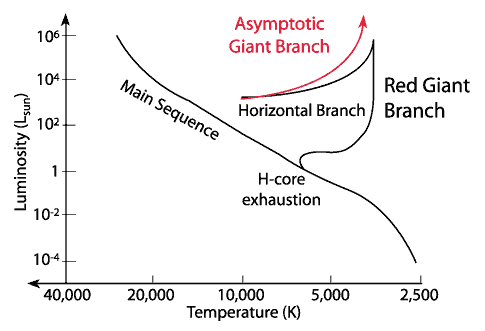Mysterious "bullets" from V Hya

V Hya is a carbon star on the asymptotic giant branch (AGB). Stars on the AGB have left the main sequence, gone through the red giant phase, and moved past the horizontal branch (see Figure 2). Now in this last phase of hydrogen burning, these stars have a carbon-oxygen core (hence the name carbon star) and are surrounded by outer shells of hydrogen and helium. As these outer layers continue nuclear fusion, pulsations of the star can lead to changes in magnitude. Eventually, the pulsations "blow away" the outer shells and what is left behind is a white dwarf surrounded by a cloud of gas and dust. This is known as a planetary nebula (no, it has nothing to do with planets, this is just a historical name based on early observations).

V Hya is a peculiar case in that it has been observed by the Hubble Space Telescope to periodically fire "bullets" (high speed collimated jets). Astronomers have hypothesized that these emissions are due to a low-mass companion star with an eccentric orbit. When the companion is at its closest approach (periastron), the interaction (possibly the magnetic field interaction) between the two objects produces the jet. In a recent submission to the Monthly Notices of the Royal Astronomical Society, Salas et al. 2019 created a model to run many simulations of the system with varying parameters. They found it is likely that this is a triple star system. In this scenario, the emissions are due to the Eccentric Kozai-Lidov (EKL) mechanism Basically, when the outer most component is on a sufficiently distant orbit, it can influence the inner two objects creating perturbations in their orbits. According to Salas et al. 2019, this is a better fit for V Hya based on the Hubble data. More research will be needed to confirm their results.

References
Sahai, R. et al. (2016), https://arxiv.org/abs/1605.06728
Salas, J. M. et al. (2019), https://arxiv.org/pdf/1902.08206.pdf
This post has been voted on by the SteemSTEM curation team and voting trail in collaboration with @curie.
If you appreciate the work we are doing then consider voting both projects for witness by selecting stem.witness and curie!
For additional information please join us on the SteemSTEM discord and to get to know the rest of the community!
@ptsouth97 would this jet be considered a CME? Like the ones our sun gives off?
Great posts btw, I think you are really impressing the community. Well your surely impressing me.
Posted using Partiko Android
Thank you. It's a great question. While I cannot answer definitively, I would speculate that this phenomena is related, but not the same as a CME. In our sun, CMEs are basically created by magnetic perturbances in the atmosphere created by the sun itself. In the case of V Hya, these perturbances are created by the influence of the companion stars. Also, because V Hya is post main sequence and in a later stage of evolution, its atmosphere is different so I don't think the "coronal" part would be the same. However, after a cursory look back at the article, I couldn't find which exact part of the atmosphere is the source.
Congratulations @ptsouth97! You have completed the following achievement on the Steem blockchain and have been rewarded with new badge(s) :
Click here to view your Board
If you no longer want to receive notifications, reply to this comment with the word
STOPTo support your work, I also upvoted your post!